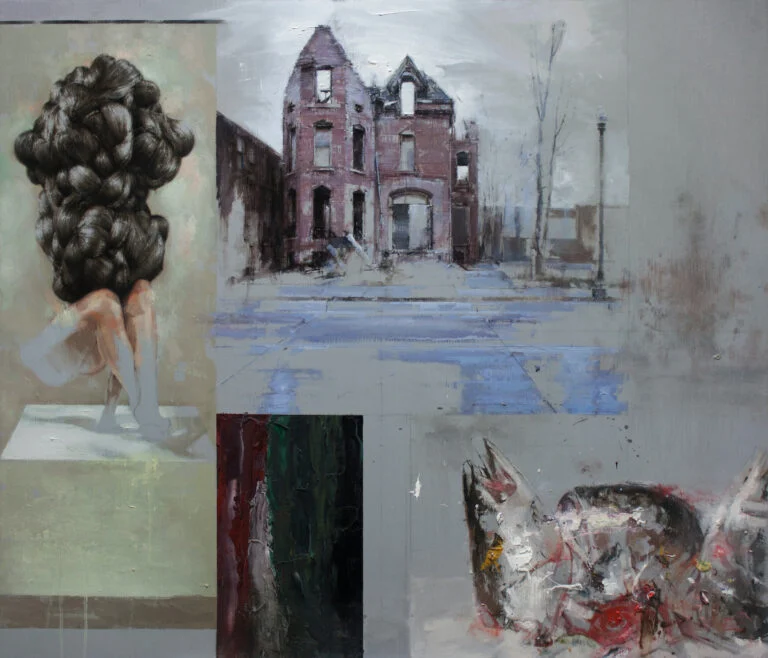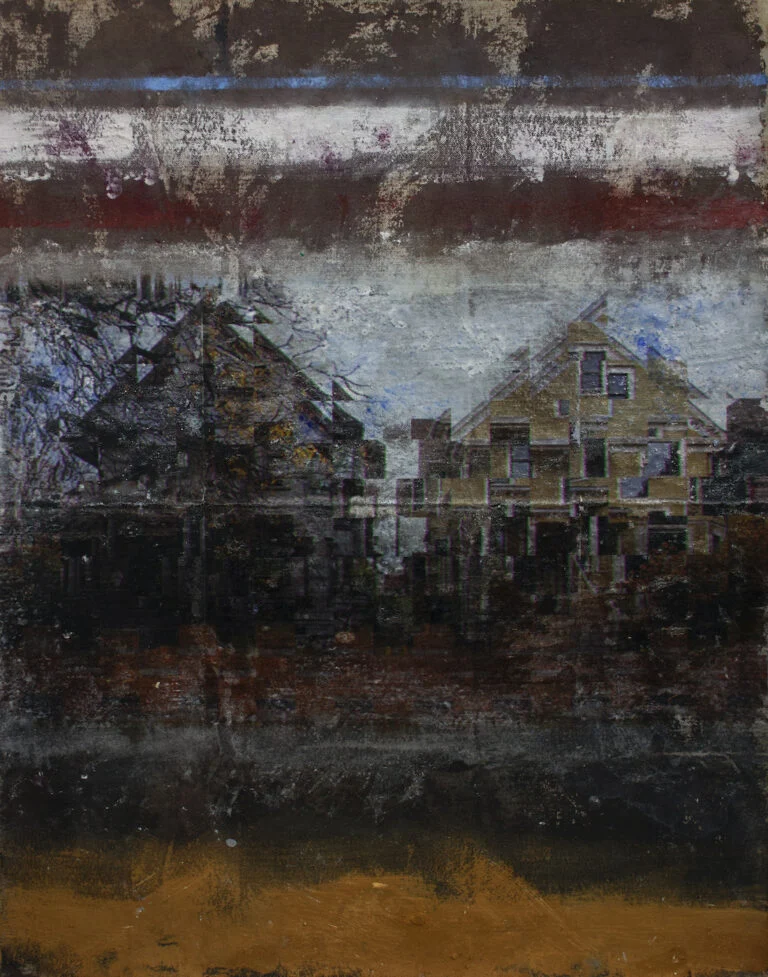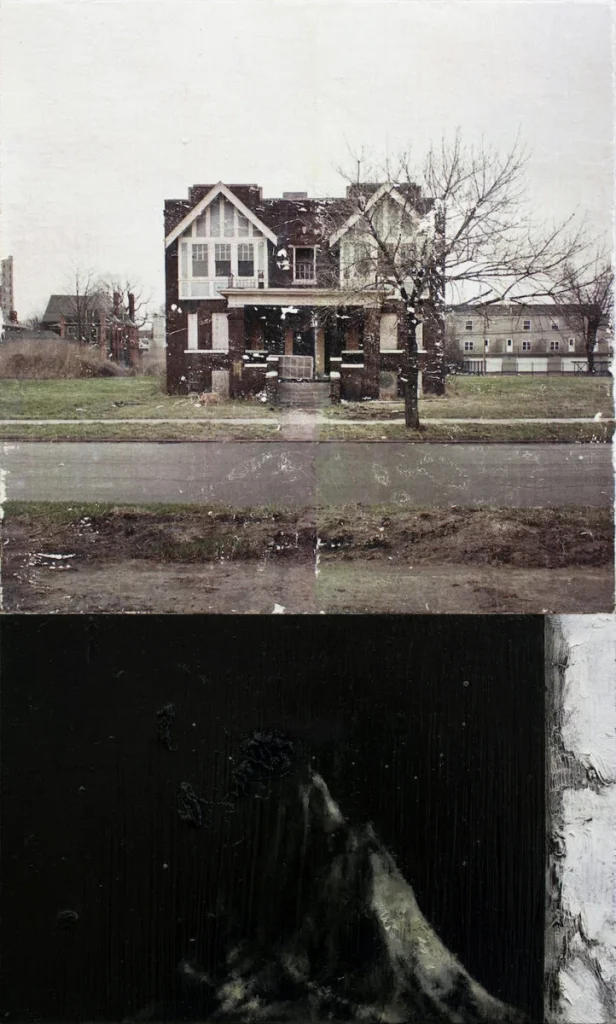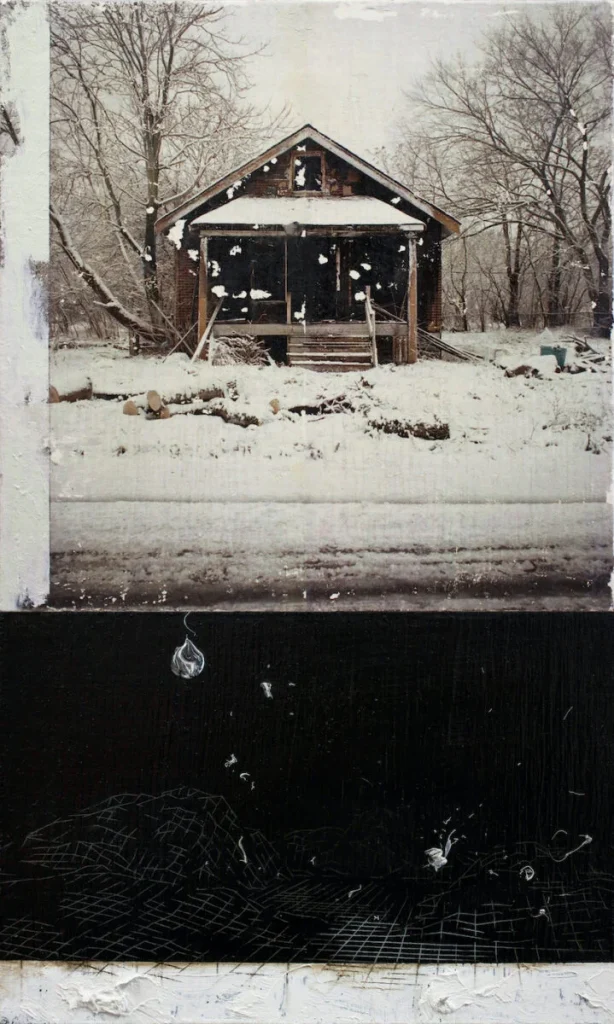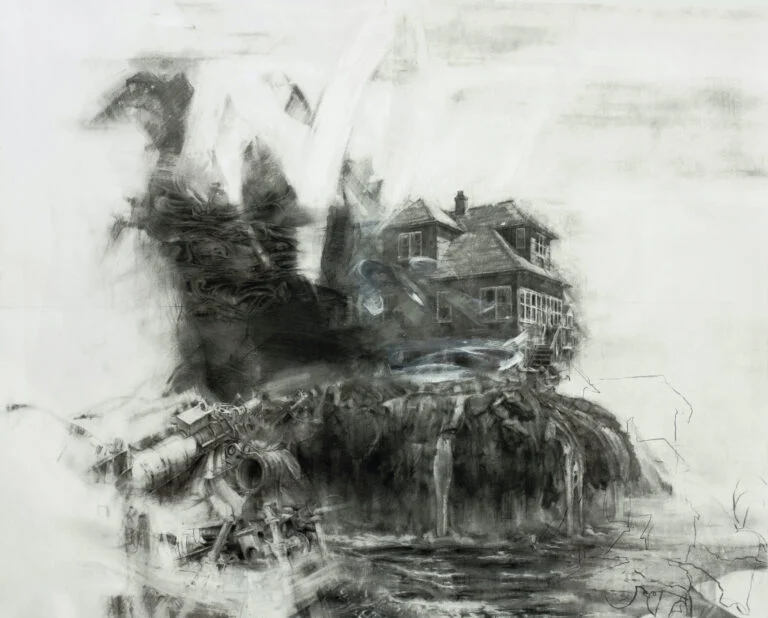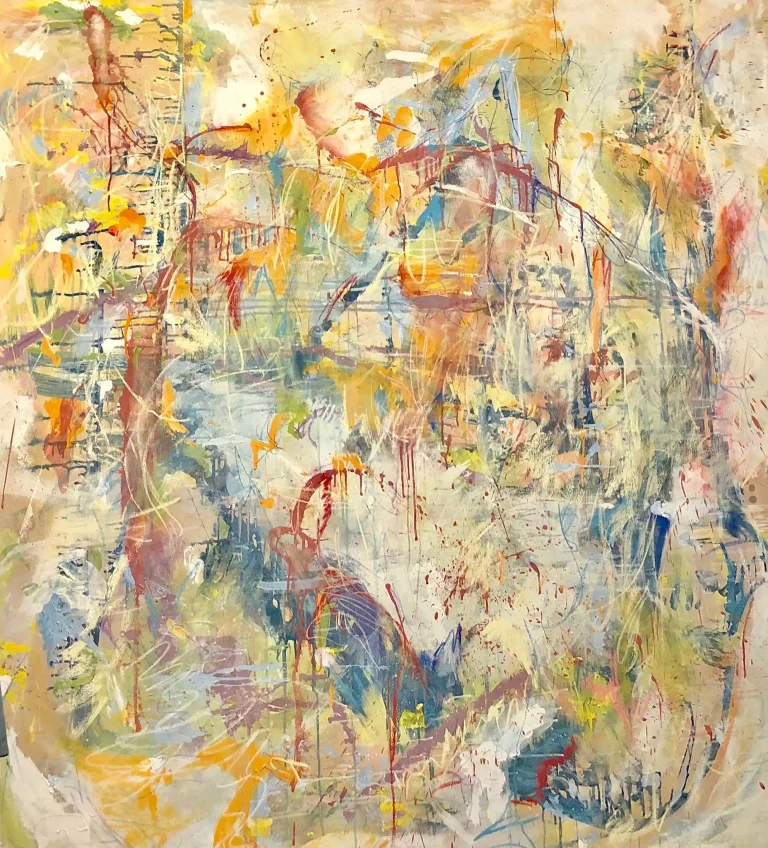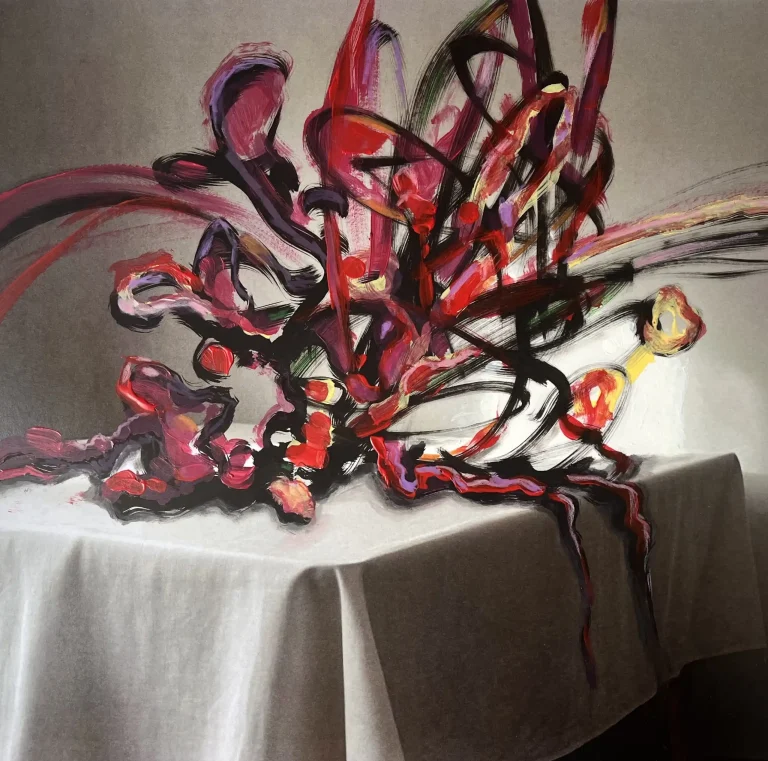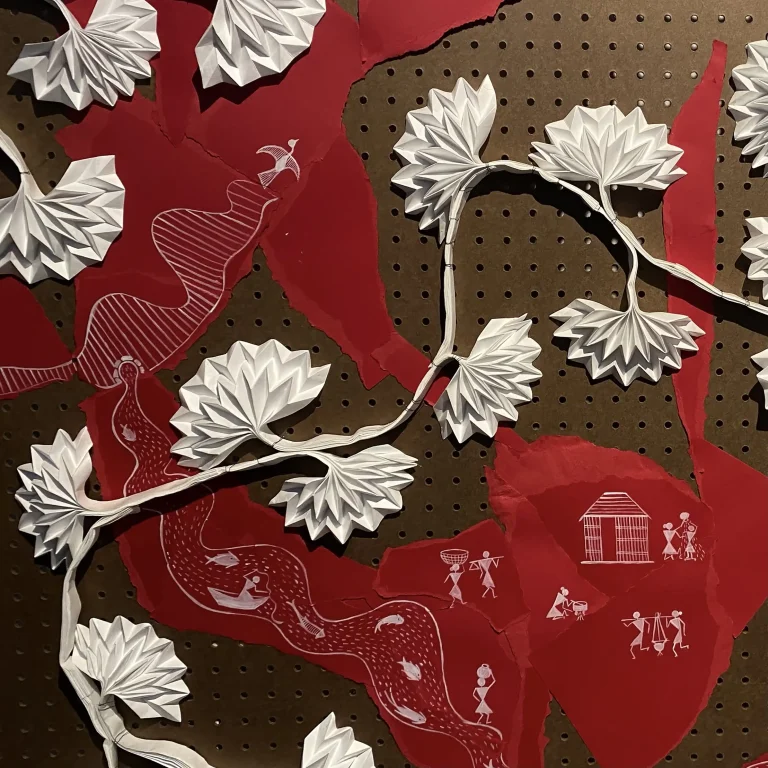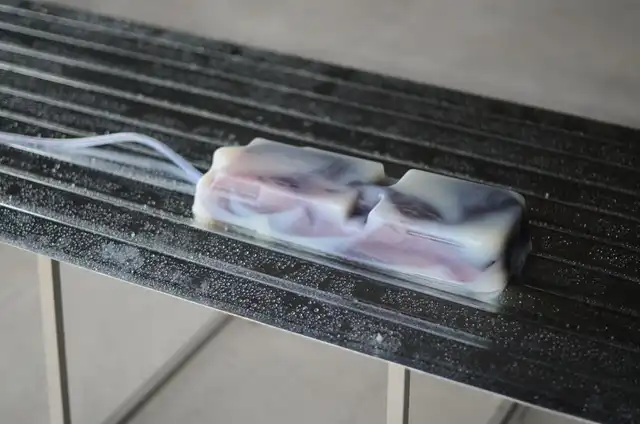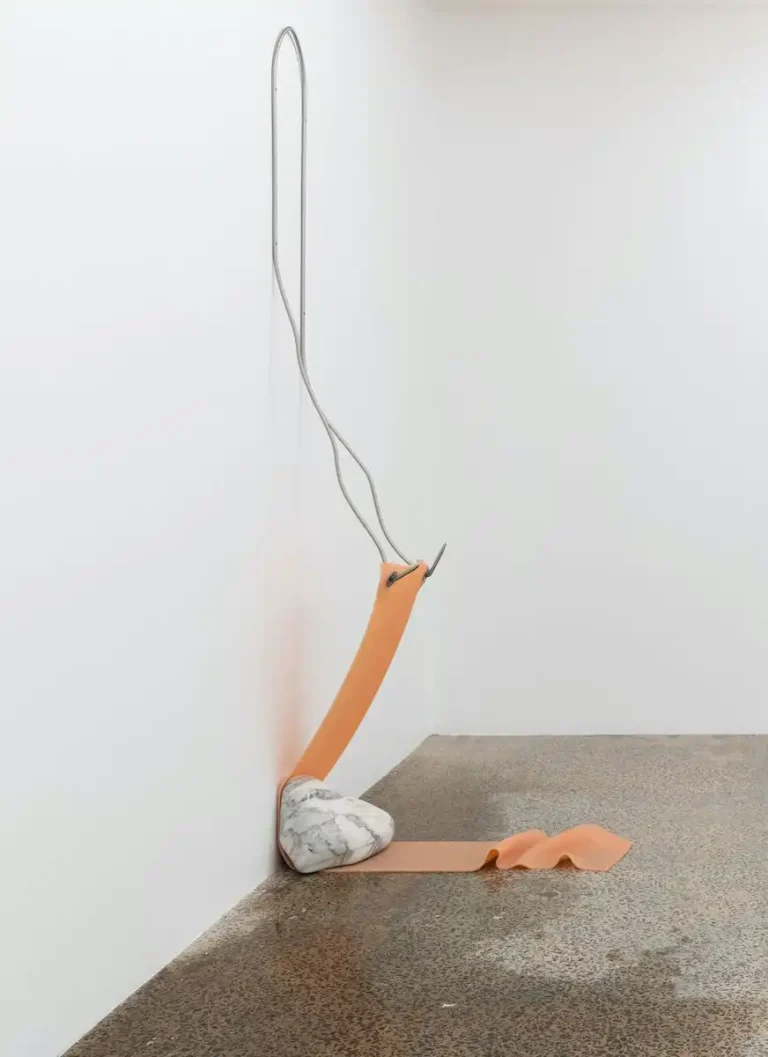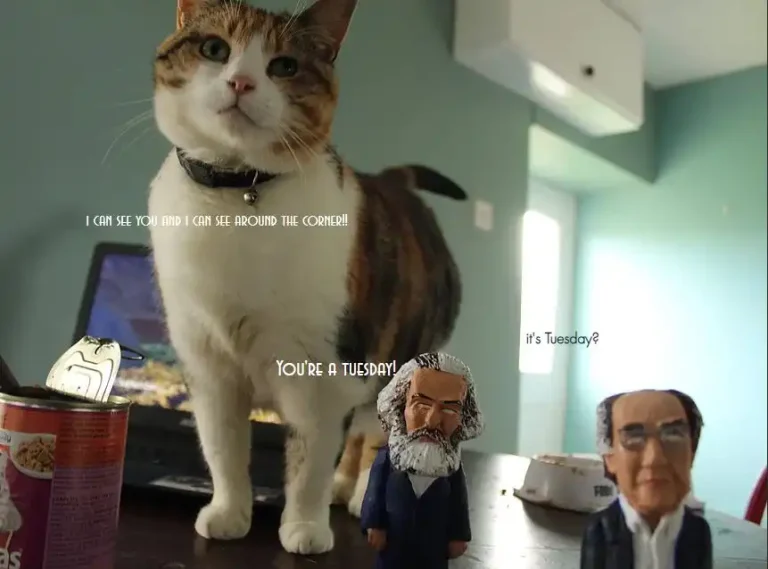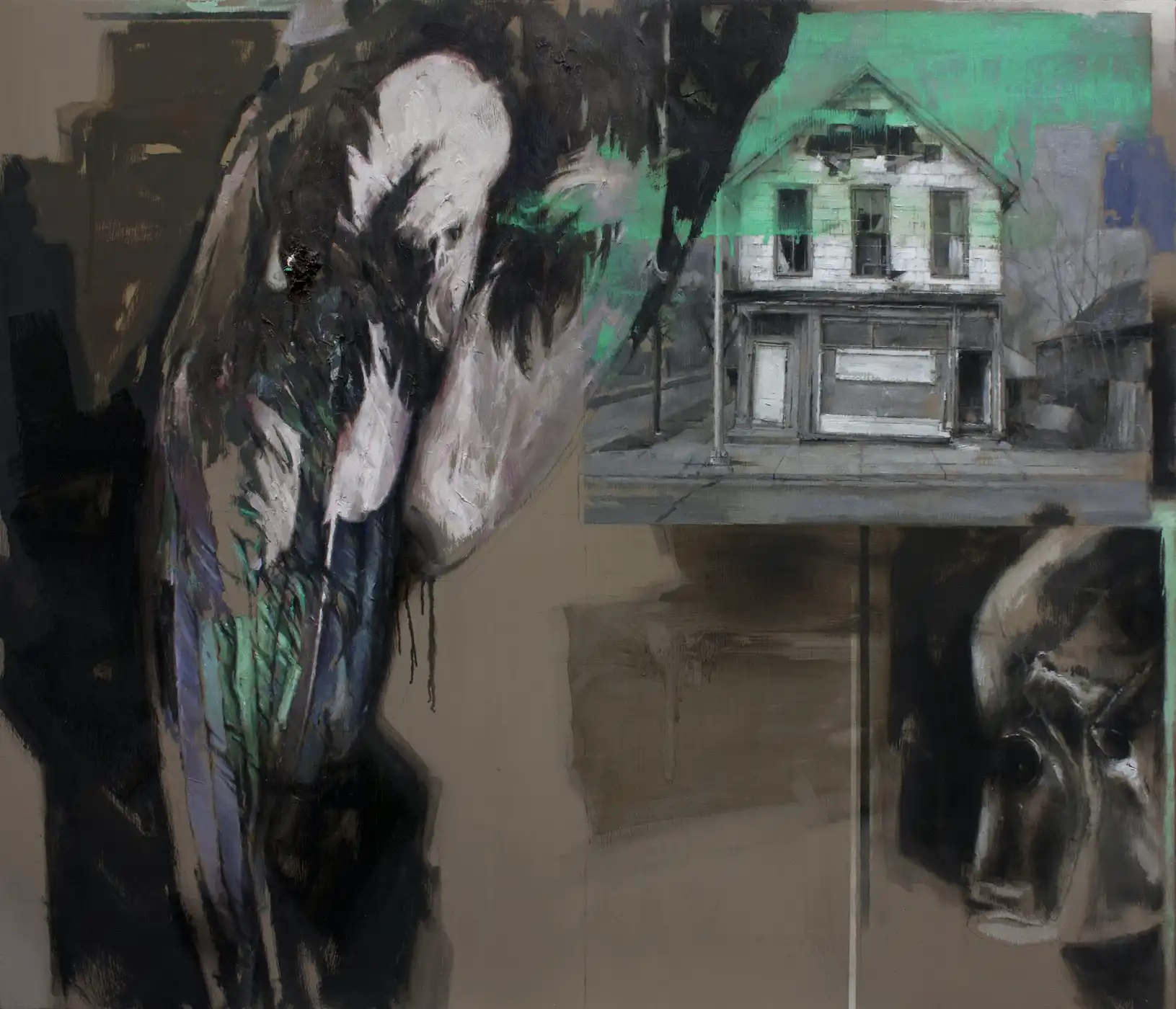
Carlos Asensio is GlogauAIR resident
from July, 2022 to September, 2022 and from October, 2022 to December, 2022
Introducing Spanish artist Carlos Asensio.
His practice focuses on paintings and collages and the overarching theme in his artwork is exposing the existing problems in contemporary society which directly affect the human condition and experience.
His newest collection is dedicated to Glitch Houses, this term can be defined as failure in computing where the image field is not considered a software error, but rather an unforeseen feature. Carlos uses this concept of glitch houses to exploit the contradictory nature of the postmodern era.
Carlos Asensio was supported by the city of Castelló.
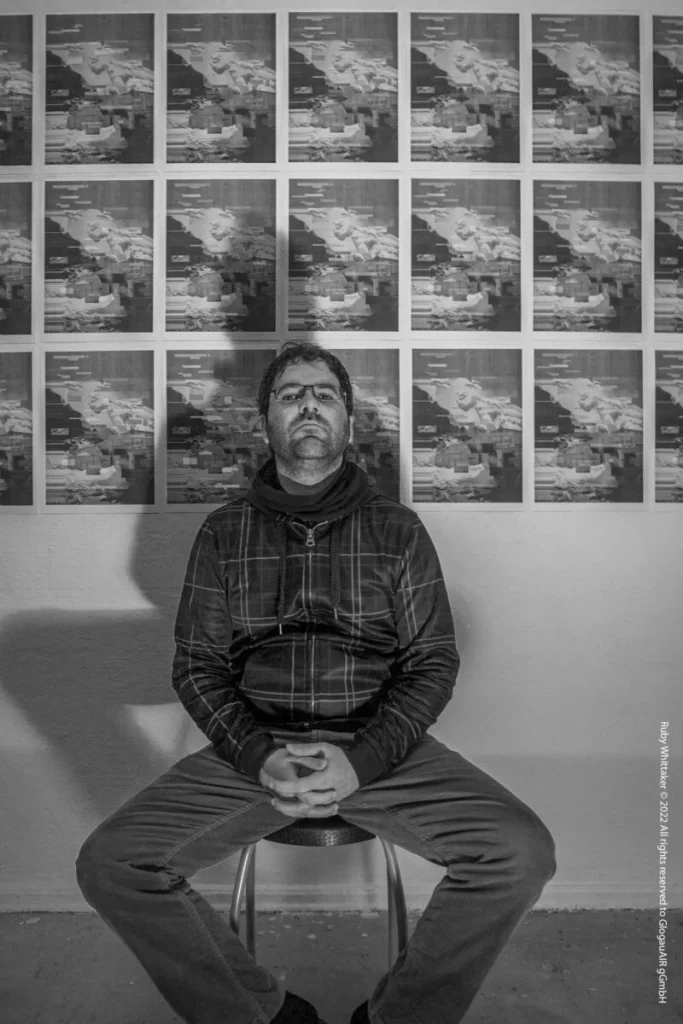
Meet the Artist
Interview 1
What is your name and where are you from?
My name is Carlos Asensio and I´m from Castellón, a city on the east coast of Spain.
When/ how did your art practice begin …. Do you think where you’re from has affected your work?
I started painting when I was little, around 11 years old, although I started to take it more seriously when I was studying at the university. The fact of being from where I am from and having studied in Valencia definitely affected my work. There I received academic training focused on figuration. On the other hand, I have always had the great masters of Spanish painting as a reference.
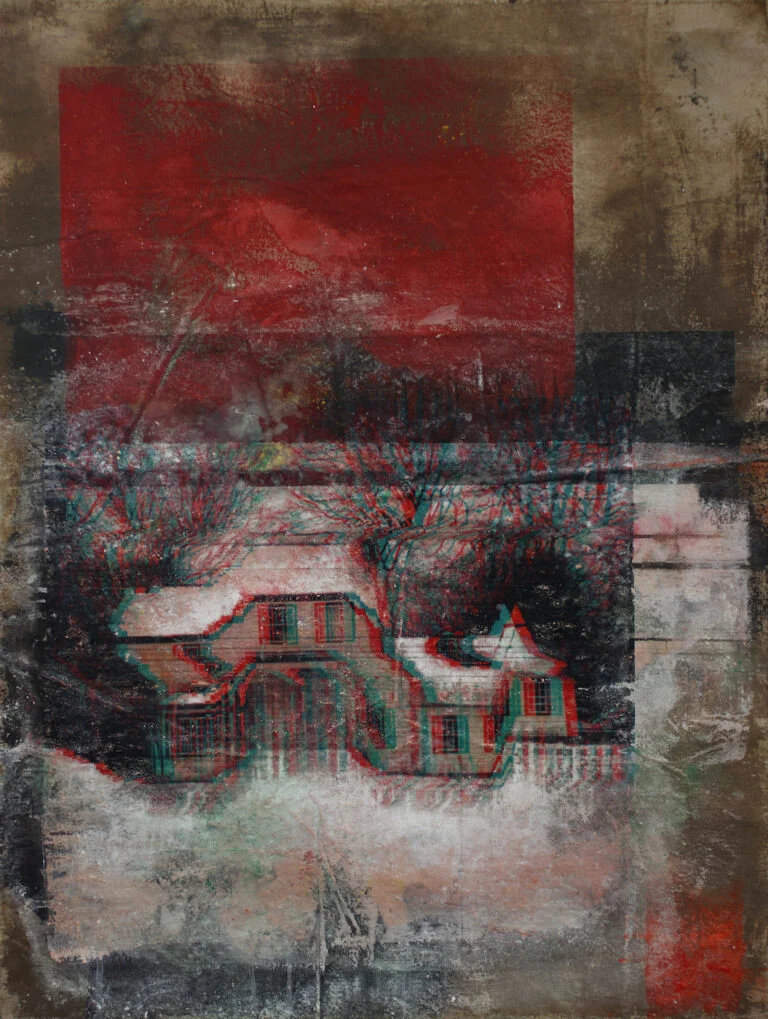
How has your practice changed over time?
My artistic practice has evolved quite a bit in the last ten years. From a more academic figuration with great interest in the great pictorial genres and their technical execution towards a more experimental work with a stronger conceptual base. I think it is important to find a balance between the aesthetic part and the discourse of your artwork.
Do you think your art has evolved being a different environment E.g. Do you think GlogauAIR / being in Berlin has influenced your work?
Whenever you move to a different environment/city and live for a while, it´s inevitable to receive all kinds of external influences. The important thing is to know how to process them and choose those that can really contribute something significant to your practice.
In the case of GlogauAIR, it turns out to be twice. On one hand, all the people with whom you share experiences help you grow on the more human side and the city enriches you on the more professional side thanks to the great cultural offer it has. In addition, the fact of being here has allowed me to learn about new techniques within the world of graphics that I´ve incorporated into the project that I´ve been developing.
What are your next plans after your residency?
First of all, finish the doctoral program in which I´m immersed and continue with art production, trying to incorporate all the knowledge acquired during my stay in Berlin.
Interview 2
Savanna: How did your artist journey begin?
Carlos: I started painting when I was very young at a small private academy close to my house growing up. My mother introduced me to it. There I received very great instruction from my teacher who was a cuban painter. He now lives in Miami, but he was my teacher and became my mentor while I was growing up. The person that showed and taught me the most about art in my childhood. I am now an art teacher, and teach students the same as my teacher taught me when I was young.
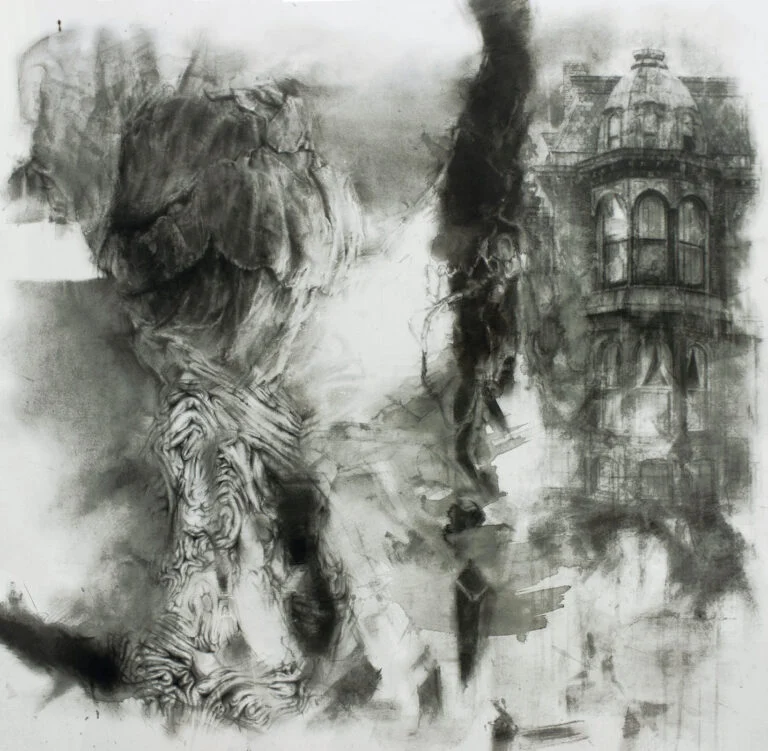
S: What do you do as an artist? What is your process? Why do you create the art that you do – what are overarching themes in your artwork?
C: I have always liked painting. I have academy training in painting from university. I also like drawing. Most recently, I have incorporated photographic techniques into my artwork. I like doing transfers and creating this effect called the ‘glitch’ effect. I enjoy the tradition of techniques but used in a contemporary approach. I love mixed media and experimenting with different techniques and mediums.
S: What is your process?
C: My process has changed. I used to work with oil paints, which is a slower process. In the past I did more figurative paintings, more academic. I used to paint life drawings, many times from photographs. Many years ago I discovered a magical tool called photoshop. Now, I map out my composition and make preparation sketches on photoshop. There are many changes that happen between photographs and paintings. It is almost like you need to translate between the two mediums .
S: How has your work evolved since being here at GlogauAIR? How has GlogauAIR changed your practice?
C: Lately I have been focusing on the ‘glitch effect’ with a diptych format. I get photographs from my own archive, and I do two paintings, the first one I paint realistically. Then I make another canvas with the glitch effect. This effect exploits the failure of a bad system. I do this effect over a photo transfer. You can see the transfer of the photograph in the background, but it looks as if it is broken or there was an error while loading the image. Almost like a technological error. I get this effect by transferring paper onto canvas with transparent latex. I express myself through this technique to share my views on the world, about society, the environment, politics, philosophy. The system is failing us and I think it is important to share my morality and have a message in my artwork.
S: Has GlogauAIR art residency affected you or your artwork?
C: My artwork has evolved since I have been at GlogauAIR. My time in Berlin has had a big effect on my work here, and I know it will affect my work in the future. I wanted to create a new body of work here in Berlin, instead of continuing an old collection of work from Spain. I think it is important to do this at art residencies and start to create from zero. I also have gotten a lot of inspiration from the art scene in Berlin, which will impact my future works.
S: What is next for you?
C: Right now, I am focusing on the moment. I can’t think about what is going to happen in one or two years because it is so far away. I am currently working on getting my PHD which is taking up much of my time. After this residency, I go back to Spain to finish my PHD thesis. I will continue to work on my paintings, as well as teach! I teach all ages: teenagers to old people. I teach all the techniques with the method that I learned from when I was a kid. I love to pass on my knowledge to younger generations.
Statement
My recent work arises as a need to delve into some concepts ascribed to the most immediate context and this means representing through art the existing problems in contemporary society which directly alludes to the necesity to review the values on which the human morality is based today. Therefore, there is no better example for this crisis of values or more specifically financial than Detroit. The initial proposal presents a conductive link through the dilapidated situation that characterizes the houses of the postmodern era in that city. At the beginning of the century, this was a model of prosperity and a clear reflection of the American dream. However, it is currently a benchmark of a city that has fallen into disrepair as a result of that economic depression, something that has happened in many cities worldwide due to the globalization of these social processes. After all, this entire series responds as a whole to an elaborate reflection directed towards the effects resulting from the acts produced by humanity and therefore inherent to the human condition. In first place, starting from the economic aspect that in some way is the germ on which the project begins to emerge. Not in vain, from there other subtopics begin to appear that, without losing any relationship with the genuine concept, provide a broader vision, enriching the work and at the same time providing it with greater continuity. Thus, aspects such as natural catastrophes or the mistreatment of the criatures that populate our nature in contrast with the agents of human progress come into play.
GlogauAIR Project
Glitch Houses
As its name indicates, part of the glitch concept, which is an Anglo-Saxon term, whose translation into Spanish means failure and in computing or the image field is not considered a software error, but rather an unforeseen feature. These visual glitches can be observed due to badly encoded or damaged files that form erroneous figures or images. Thus, this conceptual aspect provides added value to the configuration of the reproductions, as well as a greater background in the discourse. Therefore, I intend to generate a link between that anomaly represented through those graphics and the malfunction of the system represented thanks to the figurative image, in the form of abandoned architectures and other related elements that have been appearing throughout the previous series. The multiple effects of distortion, fragmentation or decomposition of the image symbolize this disorder of the most immediate reality. The chromatic combinations of graphics, together with the manipulated variants of the figurative elements, can convey a confusion on the viewer. Some works that enjoy an aesthetic appeal to the eye and, however, contain a bitter social criticism. When it comes to putting into practice, I plan to explore the plastic possibilities that the hybridization of painting with image transfer systems can offer.
CV Summary
EDUCATION
- 2020- PhD in Art and Production. Faculty of Fine Arts of San Carlos. UPV.
- 2009-2010 MFA in Artistic Production. Faculty of Fine Arts of San Carlos. UPV.
- 2004-2009 BFA Degree. Faculty of Fine Arts of San Carlos. UPV.
SELECTED SOLO SHOWS
- 2018 Inhospitable places. Tomás y Valiente Art Center. Fuenlabrada, Madrid.
- 2016 Identidad y Movimiento. Ministry of Education, Culture and Science. Castelló.
- 2014 Reflexiones sobre la Realidad. Municipal Museum. Albacete.
SELECTED GROUP SHOWS
- 2021
- Atlas del arte español. Mauro Muriendas Room. Torrelavega.
- Infinity Art – Affordable Art Fair. De Kromhoutal. Ámsterdam.
- 10+6. MENADOR espai cultural. Castelló.
- Atlas del arte español. O Vello Cárcere Cultural center. Lugo.
- Infinity Art – Art Madrid. Crystal Gallery of Palacio de Cibeles. Madrid.
- Infinity Art – Estampa, Contemporary Art Fair. IFEMA. Madrid.
- 2019
- 2019_n3. Piramidón Centre D´Art Contemporani. Barcelona.
- BAI Fellows – Art Spring 2019. Berlin Art Institute. Berlin.
- PAM´19. Faculty of Fine Arts of San Carlos. UPV. València.
- Loud Places. Estudio 22. Logroño.
- 2018
- Arte Aparte X. La Carolina Cultural Center. La Carolina, Jaén.
- 2017
- Marte, International Contemporary Art Fair. Auditorium and Conference Center. Castelló.
- Ciutat Vella Oberta. Octubre Contemporary Culture Center. València.
- 2015
- MarteLab – Incubarte 7. La Llotgeta de la CAM Classroom. València.
- Collezione Macs – Sezione Internazionale. Contemporary Art Museum of Sicilia. Catania.
- La New Fair. La New Gallery. Madrid.
- 2013
- Arte Propuestas 2013. Centro 14. Alicante.
- 2011
- 6th International Drawing Biennale – Benalla Art Gallery. Benalla.
- 6th International Drawing Biennale – Steps Gallery. Carlton, Melbourne.
- Arte Contemporáneo Siglo XXI. MEAM, European Museum of Modern Art. Barcelona.
Gallery
